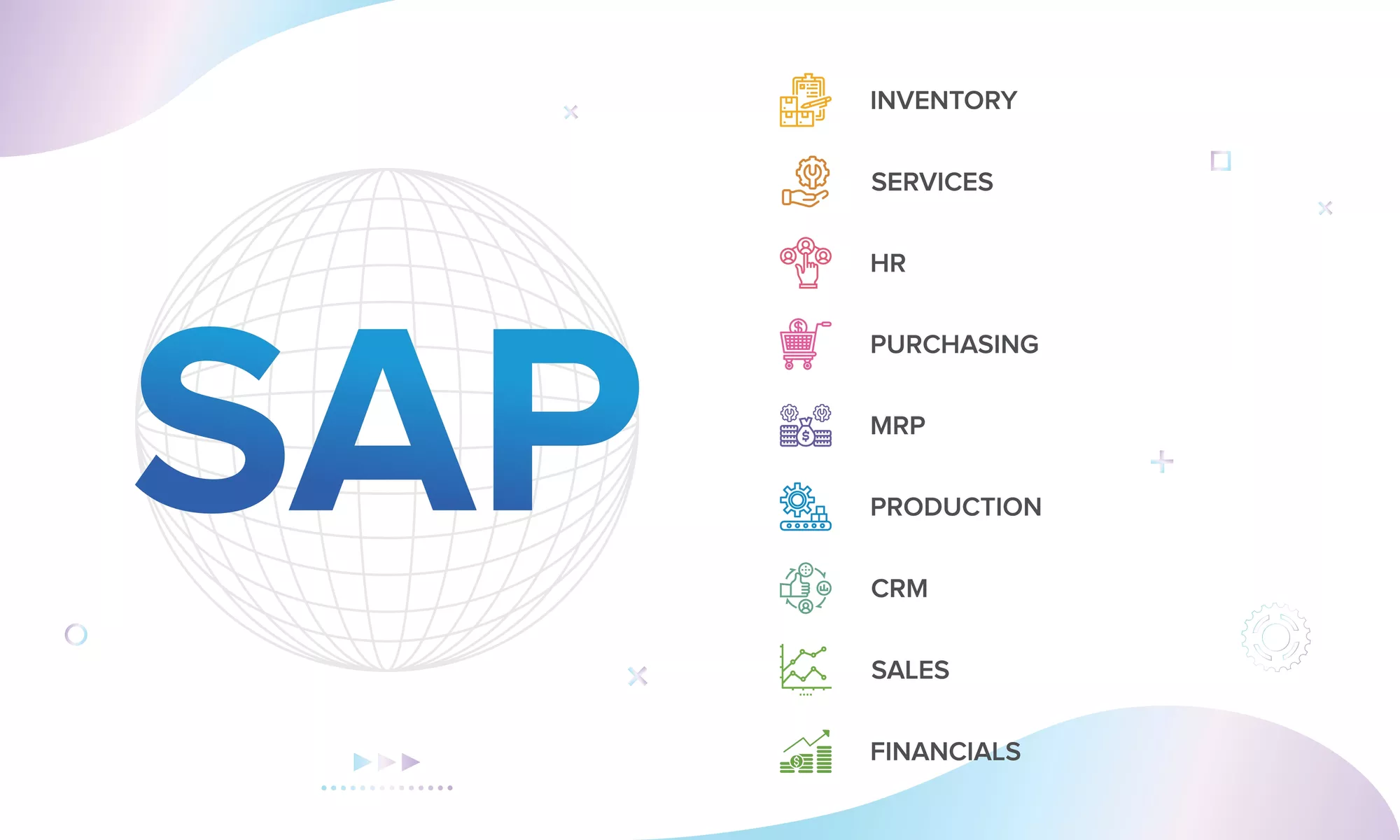Blog
SAP HANA: What the Future Holds According to the Experts
June 3, 2023
June 3, 2023
SAP HANA now has more than a decade of existence. In this time, it has surprised critics by revealing the practicality and performance of an in-memory and column-oriented database. This flagship product now ranks among the leading enterprise software systems and is expected to undergo some serious developments.
In the months and years to come, the role of SAP HANA in organizations will evolve, and the software itself will continue to improve. In fact, more components boost the system’s abilities each year, and experts predict we’ll see substantial increments in the next period.
The evolution is partly due to official SAP support for ERP Central Component (ECC) disappearing in 2025. As a result, businesses will have to adapt. This shift will likely push many organizations to upgrade to ECC’s successor, S/4HANA.
Migrating to new software and keeping up-to-date on its changes can be daunting. SAP service providers like Approyo help companies achieve the maximum benefits from SAP HANA. Fast processing of big data yields market-leading analytics and cloud-based mobile applications. As new features become available, Approyo upgrades and manages SAP HANA to keep you ahead of the curve.
Tens of thousands of users have made SAP HANA the leading solution for analytics. This era-defining technology is on track to bring even more previously unthinkable features to fruition. Those who embrace the innovations now will be well-positioned for the future.

Source: Shutterstock
Experts are reading the tea leaves and see several major trends. For one, the enterprise technology SAP HANA will spread to more of the cloud. Meanwhile, organizations will run their Internet of Things (IoT) devices through HANA. This is also the year of deploying more sophisticated artificial intelligence (AI).
What’s more, SAP HANA itself will receive new tech in 2023:
SAP HANA has already revolutionized business IT with its in-memory speed delivering instantaneous data-driven insights. Ongoing and future developments will only make the software more powerful. As technology progresses, your business can leverage each stage of performance gains.
For instance, products running on SAP’s latest database can import data 65 times faster than before. Additional gains apply to data compression and storage efficiency. With each new feature comes qualitative improvements that set the winners above the rest of the pack.
Data is flowing out of mobile devices, social media, and sensor-equipped hardware, and the race is on to digitize and profit from it. Unruly messes are accumulating in so-called “data swamps.” But new tools are rising to the occasion and extracting unparalleled value from well-organized databases. These tools are available for your organization to ride SAP’s success into the future.
Enterprises can run SAP HANA in the cloud or on-premises, although they more often choose the cloud. There are several advantages in the cloud that will grow as innovations continue. Among the biggest benefits are scalability, easy upgrades, and low cost.
Security is also extremely important in the cloud, where many unfamiliar risks can be found. However, with best practices and an SAP consultant on your side, you can add security to the advantages of SAP HANA Cloud.
What’s more, appropriate protections cover business-critical data. These defenses include security tools such as Approyo’s Overwatch, plus strong authentication and properly configured interfaces and monitoring.
SAP HANA deployments and related services are now moving in droves to the cloud. This is part of the industry-wide trend toward digital transformation. In the end, 2023 will likely become an inflection point after which most organizations will prefer cloud installs.
By hosting in the cloud, SAP and partners handle all operations and upgrades. So, the software works better and you do less work. In addition, the no-CapEx model means you only pay for what you use. What’s more, you can run a hybrid setup with cloud and on-premises installations side-by-side if you have custom needs.
The SAP HANA Cloud offering serves as a workhorse to process data. As a result, applications running anywhere—whether on-premise or in the cloud—have easy data access. The system includes graphical and command-line user interfaces for cloud database management.
Part of what makes the cloud so suitable for SAP HANA is the diversity of storage options. For instance, you can combine the extremely fast in-memory database with persistent warm storage for an ideal mix of cost, speed, and size. The elastic storage is matched by elastic cloud processing—flexibility that’s unbeatable and will draw more organizations into the fold.

Source: Shutterstock
The Internet of Things is fundamentally altering how businesses operate and how people live. Billions of sensors and devices will come online in the coming months, in cars, factories, hospitals—basically everywhere. Out of necessity, more organizations will turn to their database management system to handle the flood of data.
IoT data can come from multiple different types of sources in large volumes. Each device may have its own data formats, and new devices are released regularly. SAP HANA ingests data from all these sources in real-time. And because the organization probably already uses this database for other activities, it’s a cost-effective approach.
The widespread use of IoT devices in industry has been called “Industry 4.0.” It’s set to become the next paradigm, and fast data-processing from SAP HANA is enabling the business trend. This software can even forecast sensor data into the future, detecting any suspicious deviations from expectations. The output helps optimize devices and predict maintenance.
SAP HANA comes with numerous capabilities to support the full range of IoT tasks:
Structured Data
SAP HANA structures your data, making it easier to organize devices by, say, location or type. The column-oriented database efficiently compresses and stores information, making good use of hardware resources. Queries on the compressed data also run faster.
Clean Data
With SAP HANA, ingesting IoT sensor data is straightforward. The system instantly cleans the data of problems like duplicates and compresses the data for fast storage. Several filters enable you to determine which sensor information goes where. For example, if you have a time series with generally stable temperature or humidity readings, you could filter in only new readings to save money on data storage costs.
IoT + AI
Finally, digital technology and material reality will blend more seamlessly in the future. The IoT ties in with artificial intelligence, which enhances the network of objects with analytics. Experts predict IoT data will grow massively this decade, and the only way to make the data valuable is through powerful AI.
AI and machine learning (ML) are taking over the world. Who hasn’t heard of ChatGPT? Now, SAP AI brings a growing range of features to companies adopting their enterprise software. SAP HANA natively runs powerful algorithms that supplement the work of humans with the intelligence of machines.
Business uses of AI typically involve modeling relevant data such as sales forecasts or automating tasks like data entry. Of course, with the flexibility of SAP HANA, you can also apply AI and ML to any actions you can think of. Whichever goal you choose, the SAP tools let you make and train AI agents. Industry and company data then feed into the AI model to make it practical for real-world applications.
The software already includes preset capabilities useful for finance, supply chain management, human resources, procurement, marketing, and more. Enterprise AI is discovering hundreds of applications. Context-driven search, automatic data extraction from documents, sales order automation, financial analysis, hiring processes, risk assessments—these functions and others are revolutionizing business efficiency.
Some companies are using AI to predict behaviors like employee turnover, customer purchases, and fraud. Regression analyses can uncover the varied influences on sales. With smarter forecasts, you’re prepared to make more profitable decisions, like automatically stocking the right amount of inventory.
As another example, a data-backed classification of employees in terms of retention could help focus efforts where they’re most cost-effective—yielding a measurable return on investment (ROI). As a result, companies see the financial benefits of better processes for HR, sales, marketing, and procurement. That return will drive further investment in SAP AI.
Think of an enterprise rapidly solving problems like customer acquisition and lead scoring, demand forecasting and quality management, succession planning and risk modeling. You won’t be the only one thinking this way: the pattern in industry is to apply AI and ML to these areas.

Source: Shutterstock
As discussed, SAP HANA has become quite popular across industries. Its utility will continue to rise as more organizations undergo digital transformation. This acceleration of software use will propel an associated rise in demand for SAP experts. In fact, SAP HANA-related skills are becoming the most sought-after in IT.
Businesses of all sizes use SAP HANA, but not all can afford to develop their own in-house expertise. So, many partner with consultants such as Approyo. They’ll bring their years of experience in the trenches to provide top-notch recommendations and services, from installation to maintenance.
When used well, SAP HANA drastically enhances efficiency and data visibility. But many organizations fail to extract anywhere near as much value from the system as they could. Enterprise software is infamous for its complexity—it takes deep skills and knowledge to maximize the software’s use. SAP experts have acquired an intimate understanding that’s justifying the increase in their demand.
SAP HANA continues to expand its functionality for cloud, IoT, AI, and other areas. Each of these domains draws on the skills and experience experts possess. What’s more, enterprise software will only become larger and more complex. This expansion brings some important benefits like new features and security improvements. However, it also requires businesses and experts to up their game.
Professionals specializing in SAP HANA should stay on top of the latest developments to manage the technical challenges. By mastering the skills behind this software, they’ll make deployments more productive and optimize systems for industry’s ever more pressing needs. It takes a commitment to ongoing upskilling for experts to keep pace, but those who do will gain an edge over their IT peers.
The widely trusted enterprise software SAP HANA has innovated since its start, and it’s now on track to become even better. Cloud deployments paired with IoT, AI, and ML functionality will bring new and exciting opportunities to businesses utilizing this software. In fact, many organizations are already accelerating applications in the cloud with AI. Those that rely on the IoT are consolidating their investments through the highly capable SAP database management system and libraries.
However, these trends require engineers, consultants, and other experts to expand their skill sets. As with any fast-growing technology, there’s a constant series of challenges to overcome. Administrators, architects, developers, and everyone else on the team must do their part. The good news is consultancies such as Approyo embed all this knowledge in their services.
Keeping up with the newest SAP HANA features offers compelling rewards. For instance, businesses of all sizes can boost their performance, compliance, and security. It’s clear this solution is maturing from an upstart challenger into the proven enterprise software for ambitious companies.
Companies must stay aware of upgrades to attain the latest advances. An SAP consultant can keep you consistently ahead of the game. Approyo is the leading SAP full-service provider. With expertise in cloud-centric solutions, this SAP Certified service will future-proof your business’s systems. Contact Approyo now.